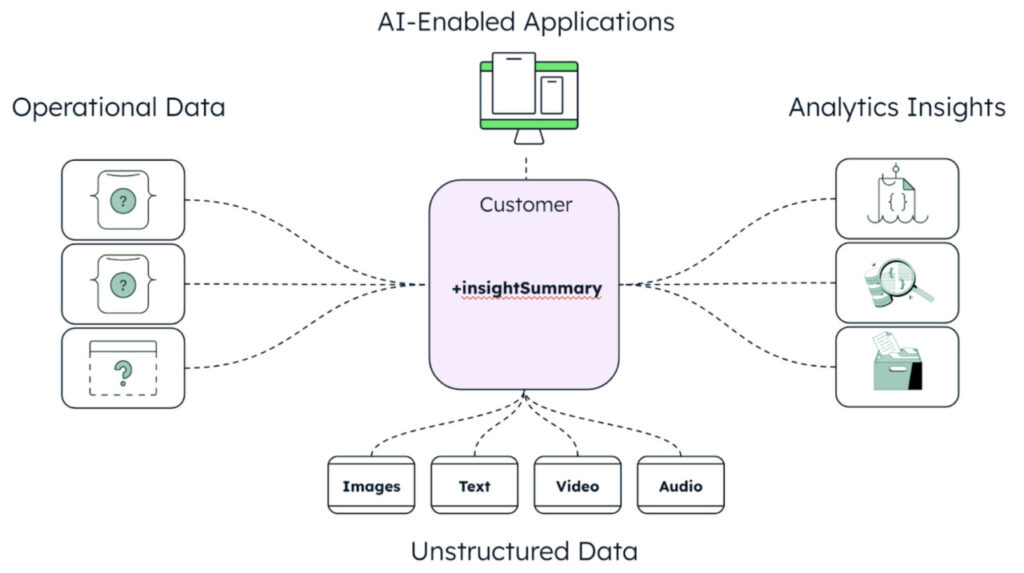In the rapidly evolving retail landscape, tech innovations are reshaping how businesses operate and interact with customers. Generative AI could add up to $275 billion of profit to the apparel, fashion, and luxury sectors’ by 2028, according to McKinsey analysis. One of the most promising developments in this realm is retrieval-augmented generation (RAG), a powerful application of artificial intelligence (AI) that combines the strength of data retrieval with generative capabilities to supercharge retail enterprises.
RAG offers compelling advantages specifically tailored for retailers looking to enhance their operations and customer engagement from personalization to enhanced efficiency. Let’s delve into how RAG is revolutionizing the retail sector.
Why RAG in retail
Imagine a customer walks into your store, and based on their previous opt-in online interactions, your technology recognizes their preferences and seamlessly guides them through a personalized service—a feat made possible by RAG. Central to RAG’s effectiveness is its ability to integrate and analyze diverse data sources scattered across data warehouses. This integration enables retailers to gain comprehensive insights into their business performance, understand consumer behavior patterns, and make data-driven decisions swiftly. Below are some of the compelling advantages that RAG can offer:
Personalization: RAG enables retailers to deliver highly personalized customer experiences by leveraging AI to understand and predict individual preferences based on past interactions.
Operational efficiency: By integrating diverse data sources and optimizing processes like supply chain management, RAG helps retailers streamline operations, reduce costs, and improve overall efficiency. For example, RAG aids in tracking shipments and optimizing logistics—a traditional pain point in the industry.
Data utilization: It allows retailers to harness the power of big data by integrating and analyzing disparate data sources, providing actionable insights for informed decision-making.
Customer engagement: RAG facilitates proactive customer engagement strategies through features like autonomous recommendation engines and hyper-personalized marketing campaigns, thereby increasing customer satisfaction and loyalty.
In essence, RAG empowers retailers to harness AI’s full potential to deliver superior customer experiences, optimize operations, and maintain a competitive edge in the dynamic retail landscape. But without a clear roadmap, even the most sophisticated AI solutions can falter. By pinpointing specific challenges—such as optimizing inventory management or enhancing customer service—retailers can leverage RAG to tailor solutions that deliver measurable business outcomes.
Despite its transformative potential, retailers must first be AI-ready and able to integrate it in a way that enhances operational efficiency without overwhelming existing systems. To achieve this, retailers need to address data silos, ensure data privacy, and establish robust ethical guidelines for AI use. According to a Workday Global Survey, only 4% of respondents said their data is fully accessible, and 59% say their enterprise data is somewhat or completely siloed. Without a solid data foundation, retailers will struggle to achieve the benefits they are looking for from AI.
Embracing the future of retail with RAG and MongoDB
By harnessing the power of data integration, precise use case definition, and cutting-edge AI technologies like RAG, retail enterprises can not only streamline operations but also elevate customer experiences to unprecedented levels of personalization and efficiency.
Building a gen AI operational data layer (ODL) enables retailers to make the most of their AI-enabled applications. A data layer is an architectural pattern that centrally integrates and organizes siloed enterprise data, making it available to consuming applications. As shown below in Figure 1, pulling data into a single database eliminates data silos, centralizes data management, and improves data integrity.
Using MongoDB Atlas to unify structured and unstructured operational data offers a cohesive solution by centralizing all data management in a scalable, cloud-based platform. This unification simplifies data management, enhances data consistency, and improves the efficiency of AI and machine learning workflows by providing a single source of truth. With a flexible data schema, retailers can accommodate any data structure, format, or source—which is critical for the 80% of real-world data that is unstructured.
Figure 1: Generative AI data layer
As AI continues to evolve, the retail industry is poised to see rapid advancements, driven by the innovative use of technologies like RAG. The future of retail lies in seamlessly integrating data and AI to create smarter, more responsive business models.
If you would like to learn more about RAG for Retail, visit the following resources:
Presentation: Retrieval-Augmented Generation (RAG) to Supercharge Retail Enterprises
White Paper: Enhancing Retail Operations with AI and Vector Search: The Business Case for Adoption
The MongoDB Solutions Library is curated with tailored solutions to help developers kick-start their projects
Source: Read More

